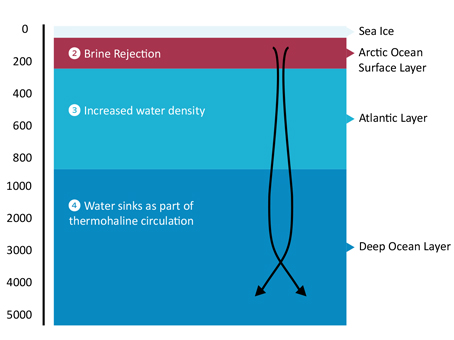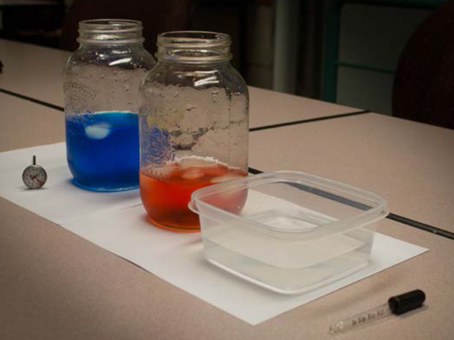In this lesson developed by the Arctic Eider Society, students simulate thermohaline circulation – “thermo” for heat and “saline” for salt – on a smaller scale.
When sea ice forms in the fall, salt is expelled into the water below. This, along with frigid temperatures, changes the density of the water and causes it to sink. The movement of this water, which sometimes sinks all the way to the ocean floor, only happens where ocean water is really cold, like in the Arctic Ocean. This mechanism is an important part of what drives global ocean circulation.
1. Thermohaline Circulation
First, students learn about the distinct layers that occur in most ocean basins, separated because of temperature and salinity differences. Looking at the impact of sea ice on salinity, students will learn about the importance of the Arctic Ocean for the exchange between the surface and the deep bottoms of the world’s oceans.

2. Experiment
In the experiment, students will visualize the effects of salinity and temperature on the density of water, and how density affects the movement of ocean water from the surface to the ocean depths. The student booklet includes a detailed protocol, as well as observation and reflection questions.

Resources

